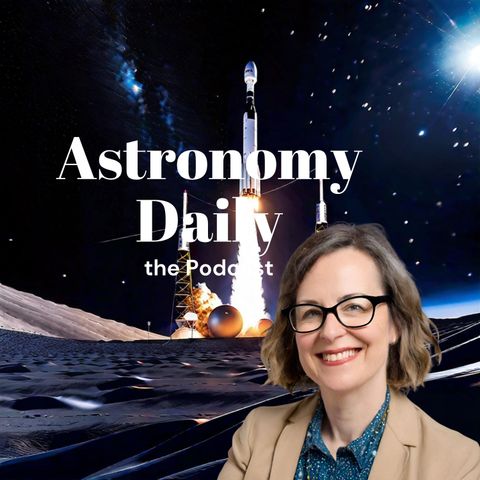SpaceX's Falcon 9 Cleared; Europa Clipper Delayed; Nuclear Propulsion Advances

Descarga y escucha en cualquier lugar
Descarga tus episodios favoritos y disfrútalos, ¡dondequiera que estés! Regístrate o inicia sesión ahora para acceder a la escucha sin conexión.
SpaceX's Falcon 9 Cleared; Europa Clipper Delayed; Nuclear Propulsion Advances
Esta transcripción es generada automáticamente. Ten en cuenta que no se garantiza una precisión absoluta.
Descripción
Astronomy Daily - The Podcast: S03E173 Welcome to Astronomy Daily, your ultimate source for the latest in space and Astronomy news. I'm Anna, your host, and today we have an...
mostra másWelcome to Astronomy Daily, your ultimate source for the latest in space and Astronomy news. I'm Anna, your host, and today we have an episode brimming with exciting updates from rocket launches to planetary exploration and cosmic mysteries.
Highlights:
- SpaceX Falcon 9's Return to Flight: The Federal Aviation Administration has authorized SpaceX to resume Falcon 9 flights following a previous malfunction. This clearance is timely for ESA's HERa mission, launching today, October 7, to study the impact of NASA's DaRt spacecraft on asteroid Dimorphos. This marks a significant step in international space collaboration.
- Europa Clipper Mission Delay: NASA's $5 billion Europa Clipper mission faces a delay due to Hurricane Milton. Originally set for October 10, the launch is postponed with a window extending through November 6. Safety concerns have taken precedence, but the mission team is actively working on securing the spacecraft and reassessing launch options.
- Nuclear Thermal Propulsion Advancements: Researchers are developing nuclear thermal propulsion technology that could halve travel time to Mars. By utilizing nuclear fission, this propulsion system promises more efficient space travel, potentially revolutionizing future crewed missions to the red planet.
- BEPI Colombo's Mercury Philip: The Bepicolombo spacecraft's recent flyby of Mercury has provided new insights into the planet's magnetic field and plasma environment. These observations are paving the way for more detailed studies when Bepicolombo enters Mercury's orbit in 2026.
- Origin of Sagittarius A: A new study suggests that the Milky Way's central supermassive black hole, Sagittarius A*, formed from a merger with another black hole around 9 billion years ago. This discovery sheds light on its rapid spin and misalignment with the Milky Way's angular momentum.
- Concerns Over China's Qianfan Satellites: The brightness of China's Qianfan broadband constellation satellites is raising alarms among astronomers, potentially interfering with night sky observations. The astronomical community is calling for immediate action to address this issue as China plans to launch thousands more.
For more space news, visit our website at astronomydaily.io. There, you can sign up for our free Daily newsletter, catch up on all the latest space and Astronomy news with our constantly updating newsfeed, and listen to all our previous episodes.
Don't forget to follow us on social media. Just search for #AstroDailyPod on Facebook, X, YouTubeMusic, and TikTok.
Thank you for tuning in. This is Anna signing off. Until next time, keep looking up and stay curious about the wonders of our universe.
Información
| Autor | bitesz.com |
| Organización | bitesz.com |
| Página web | www.astronomydaily.io |
| Etiquetas |
Copyright 2024 - Spreaker Inc. an iHeartMedia Company
